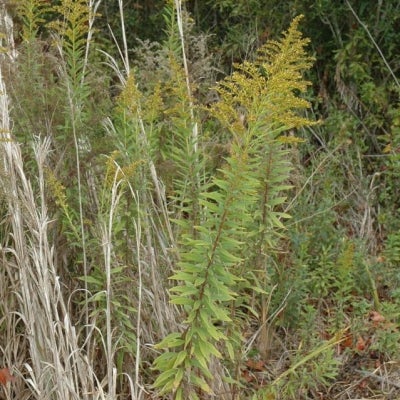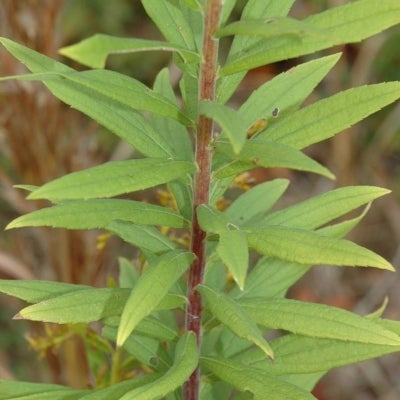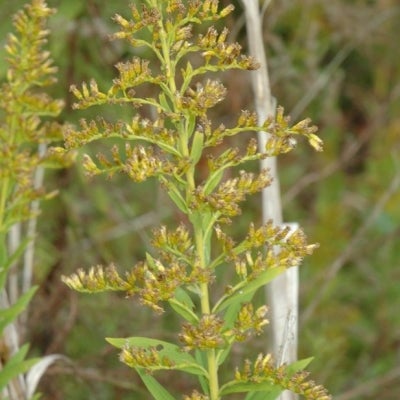Department of Biology
ESC 350
200 University Ave. W
Waterloo, Ontario, Canada N2L 3G1
Phone: (519) 888-4567 ext. 32569
Fax: (519) 746-0614
Southern Late Goldenrod
Solidago altissima var. pluricephala M.C. Johnston is the common late flowering goldenrod of the southeastern U.S. occurring from southern Texas to southeastern Virginia. This was not recognized by Semple & Cook (2006 FNA). The multivariate study of the S. altissima complex by Semple et al. (2015) indicated that there is a somewhat distinctive race of the species in the southeast that had been included in a broadly defined subsp./var. altissima. Var. pluricephala often has an elongated narrow inflorescence compared to var. altissima; also, the upper stem leaves tend to be more reduced in size than in var. altissima. The narrow inflorescence is similar to those of S. leavenworthii. Intermediates between var. altissima and var. pluricephala occur in the broad zone of sympatry. The variety has leaves that are less densely hairy than those of var. gilvocanescens. The variety is mostly hexaploid, but tetraploids occur across the southern portion of the range (Semple 2022; see map for S. altissima).
Cheek and Semple (2016) reported the occurrence of S. altissima var. pluricephala in South Africa as an invasive. Semple and Rao (2017) documented the presence of var. pluricephala in southern India. Semple and Uesugi (2017) documented the presence of var. pluricephala in Australia, Tonga and Hawaii.
Var. pluricephala was included in a multivariate study on the recently described S. veracruzensis native to Esto. Veracruz, Mexico. Individuals of S. veracruzensis can look quite similar to individuals of var. pluricephala but the former has broader phyllaries (usually 0.6-0.8 mm wide) than those of the latter. Upper stem leaves of S. veracruzensis are similarly reduced like those of var. plucricephala but are more likely to be serrate.
Solidago altissima var. pluricephala, Florida
Solidago altissima var. pluricephala, mid stem leaves, Florida
Solidago altissima var. pluricephala, inflorescence, Florida
Cheek, M. D. and J.C. Semple. 2016. First official record of naturalised populations of Solidago altissima L. var. pluricephala M.C. Johnst. (Asteraceae: Astereae) in Africa. South Afr. J. Bot. 105: 333-336.
Semple, J.C. and K. Sankara Rao. 2017. Solidago altissima var. pluricephala (Asteraceae: Astereae) in India. Phytoneuron 2017-32. 1-7.
Semple, J.C. and A. Uesugi. 2017. Solidago altissima var. pluricephala (Asteraceae: Astereae) in Australia, Tonga and Hawaii. Phytoneuron 2017-40: 1–16.
Semple, J.C. 2018. Solidago veracruzensis, a new species of goldenrod in S. subsect. Triplinerviae (Asteraceae: Astereae) from Mexico. Phytoneuron 2018-52: 1–18.
Semple, J.C. 2022. The cytogeography of Solidago altissima in North America (Asteraceae: Astereae). Phytoneuron. 2022-17: 1-14.
Revised 2 June 2023 by J.C. Semple
© 2023 J.C. Semple, including all photographs unless otherwise indicated







